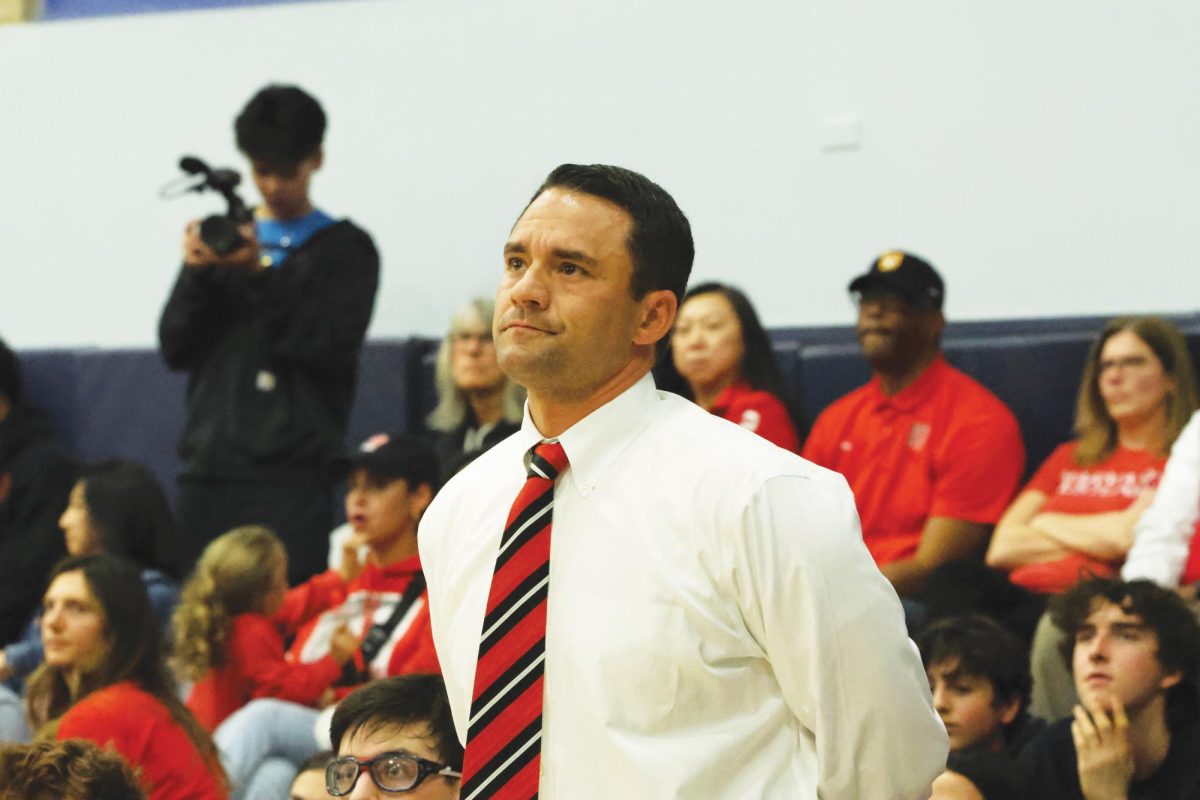By Spencer Gisser
A massive earthquake hits Southern California during a school day. Power lines are knocked down and the roads are too covered in mud and dirt to travel. Is Harvard-Westlake prepared for a disaster of this magnitude?
Jim Crawford, the Head of School Security and Head of CJL Security, Inc., has asked himself the same question.
Over the past five years, the school kept prepared in the event of a disaster. CJL supplied two shipping crates that have been filled with everything that could be useful in a disaster.
One of the crates is filled with tools and emergency equipment and the other is filled with the food and water that would be necessary if students and faculty had to stay on campus for an extended time.
The two large forest-green shipping crates, called the “bunkers,” sit in a secluded area adjacent to Coldwater Canyon, between Zanuck Swim Stadium and the away bleachers on Ted Slavin Field, shaded by tall trees that have had some of their limbs removed to prevent falling tree-limbs from damaging the bunkers.
The crates are well-secured; four long steel bars hold the doors to each crate closed. The large, bulky Kryptonite locks on the bunkersâ doors are designed to resist being “broken, cut, or melted,” Crawford said.
They look perfectly ordinary with the exception of the red and yellow triangle that is CJL Security Inc.âs old logo. Crawfordâs jacket has a sleek new circular logo of a Navy Seal on a circular American flag-based background with a picture of California in the middle.
The shipping crates have been designed to withstand the torrents of rain that are often encountered by cargo ships at sea. Their walls are strong enough so that “you could be torching this thing for a long time without getting in,” Crawford said.
The interior of the supply crate is far more interesting than the outside: there are two large supply racks on either side of the crate that are filled with equipment held in place with orange bungee cords to secure it in the event of an earthquake. At the far end of the crate are large pieces of equipment and machinery.
The crate has been stocked with fans, triage tarps, generators, walkie-talkies, toilets, gurneys, flashlights, ladders, shovels, sledgehammers, hard hats, rope and tents. The bunkers also hold the most important pieces of equipment, the search and rescue kits and the trauma kits.
The crate also has supplies for entertainment, such as board games and satellite TV.
Pots, stoves, propane and two generators are stowed in the back.
The generators run on gasoline, but no gasoline is stored in the crates for safety reasons. If a disaster occurs and security personnel cannot reach a gas station, the supply crate is equipped with hoses that can be used to suck the oil out of the gas tanks of cars.
The supply crate is also equipped for outlandish disasters: ten radiation and biochemical-resistant suits as well as Geiger counters are also stashed in the bunkers. For a worst-case scenario, the supply crate also stores body bags.
The second crate is filled with the food and water that would be necessary if a disaster prevented people from leaving the campus. The crate has 55 gallon barrels of water and enough food for four days, one day beyond the state minimum.
There is enough food and water stored in the crate that the Harvard-Westlake security personnel can “even help another 1,000 people if we have to,” Crawford said.
The water is tested for sanitation monthly.
All food and equipment is replaced regularly, Crawford said.





































